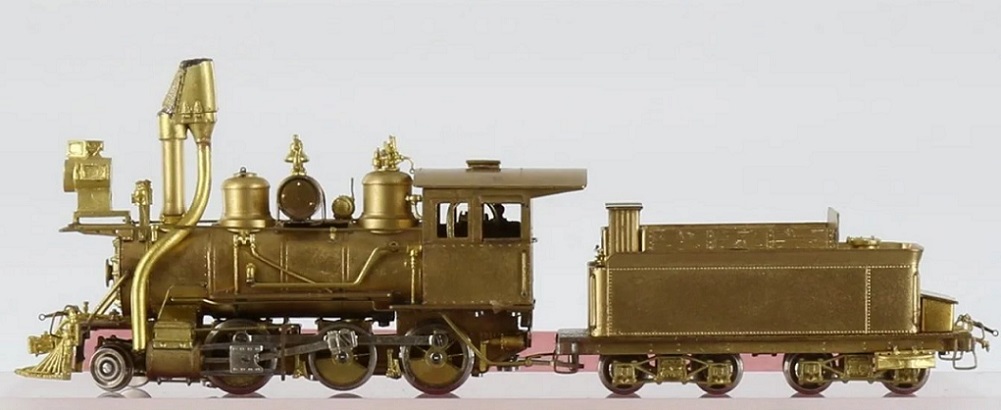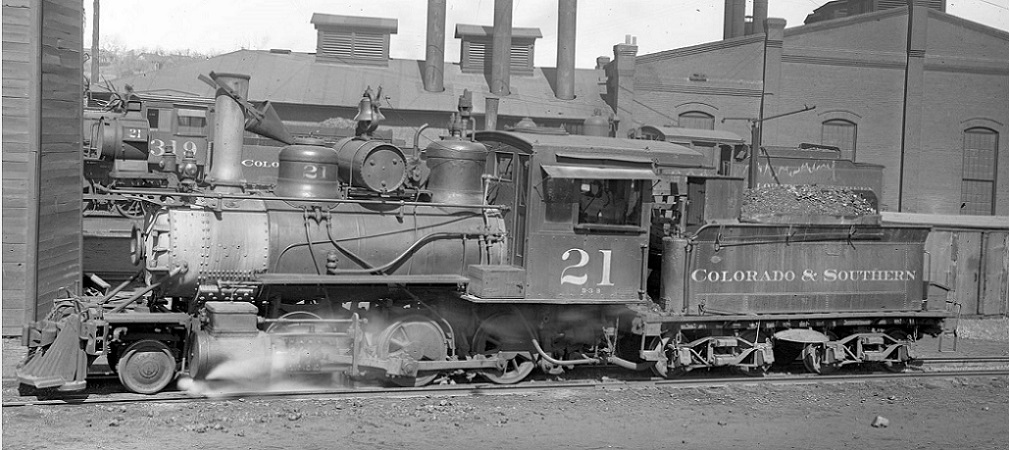Re: C&S #47, an Sn3 C-16 conversion
Posted by Jim Courtney on Dec 07, 2020; 2:34am
URL: http://c-sng-discussion-forum.254.s1.nabble.com/C-S-30-a-C-16-conversion-tp15055p16115.html
Wow, John, just like the "caboose that never was thread", we're discovering things that cast a lot of doubt about past model building/manufacturers decisions, perhaps based on misconceptions about the folio sheets.
Consider the HOn3 Key C&S 22:

Image from BrassTrains.com
I owned one years ago. I always thought that the cab looked small in proportion to the locomotive. Perhaps Key used the folio cab dimensions??
The Overland Sn3 models of C&S 21 and 22 may have the same problems. I'm using the models to build earlier versions for 1901 and 1909 and actually have some extra cabs that I was planning to use on the Cooke 2-8-0s. If your measurements are correct, then I've acquired cabs too small for the planned model. Consider this 1918 portrait of C&S 21:

What is your gestimate of cab dimensions from the photos??
The folio sheet shows this cab to have the same dimensions as the Cooke 2-8-0s at 5 foot, 2 1/2 inches long. Comparing the models to the photos, the model cabs seem small in relationship to the tender. The Overland first run C&S 22 in Sn3 has a cab that is noticeably larger than the later offerings--maybe it is correct after all, derrived from photos, not the folios. I will have to dig it out and measure it.
As for the folio sheets, one would think that the cab measures would be outside dimensions, for the clearance reasons that you have mentioned. Maybe the interior volume of the cab was in some way more important.
I'm sure glad you started this thread. I've always wanted a couple of Cooke 2-8-0s, but it never occurred to me to modify a C-16!
My project is still on pause as the lacquer thinner works its magic on that stubborn PFM paint.
URL: http://c-sng-discussion-forum.254.s1.nabble.com/C-S-30-a-C-16-conversion-tp15055p16115.html
Wow, John, just like the "caboose that never was thread", we're discovering things that cast a lot of doubt about past model building/manufacturers decisions, perhaps based on misconceptions about the folio sheets.
Consider the HOn3 Key C&S 22:

Image from BrassTrains.com
I owned one years ago. I always thought that the cab looked small in proportion to the locomotive. Perhaps Key used the folio cab dimensions??
The Overland Sn3 models of C&S 21 and 22 may have the same problems. I'm using the models to build earlier versions for 1901 and 1909 and actually have some extra cabs that I was planning to use on the Cooke 2-8-0s. If your measurements are correct, then I've acquired cabs too small for the planned model. Consider this 1918 portrait of C&S 21:

What is your gestimate of cab dimensions from the photos??
The folio sheet shows this cab to have the same dimensions as the Cooke 2-8-0s at 5 foot, 2 1/2 inches long. Comparing the models to the photos, the model cabs seem small in relationship to the tender. The Overland first run C&S 22 in Sn3 has a cab that is noticeably larger than the later offerings--maybe it is correct after all, derrived from photos, not the folios. I will have to dig it out and measure it.
As for the folio sheets, one would think that the cab measures would be outside dimensions, for the clearance reasons that you have mentioned. Maybe the interior volume of the cab was in some way more important.
I'm sure glad you started this thread. I've always wanted a couple of Cooke 2-8-0s, but it never occurred to me to modify a C-16!
My project is still on pause as the lacquer thinner works its magic on that stubborn PFM paint.

Jim Courtney
Poulsbo, WA
Poulsbo, WA
| Free forum by Nabble | Edit this page |